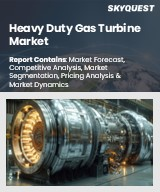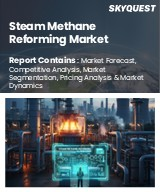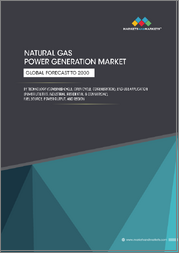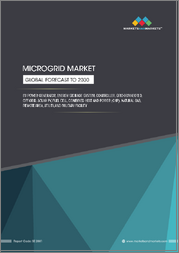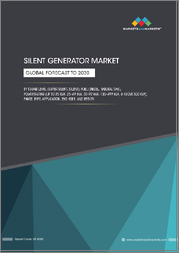
|
시장보고서
상품코드
1683670
세계의 비전통 가스 시장 조사 보고서 : 산업 분석, 규모, 점유율, 성장, 동향 및 예측(2025-2033년)Global Unconventional Gas Market Research Report- Industry Analysis, Size, Share, Growth, Trends and Forecast 2025 to 2033 |
||||||
세계의 비전통 가스 시장 규모는 2024년 2,375억 7,000만 달러에서 2033년에는 4,356억 6,000만 달러에 달하고, 2026-2033년의 예측 기간 동안 6.97%의 견조한 연평균 성장률(CAGR)을 보일 것으로 예상됩니다.
비전통 가스 시장은 청정 에너지원에 대한 수요 증가와 비전통 가스 자원의 채굴을 가능하게 하는 기술 발전으로 인해 크게 성장할 것으로 예상됩니다. 비전통 가스는 셰일가스, 타이트 가스, 석탄층 메탄 등을 포함하며, 각국이 기존 화석연료에 대한 의존도를 낮추기 위해 노력함에 따라 전 세계 에너지 믹스에 필수적인 요소로 자리 잡고 있습니다. 이러한 자원을 활용하는 능력은 특히 비전통 가스 매장량이 풍부한 지역에서 에너지 안보를 강화하고 보다 지속 가능한 에너지 공급을 실현할 수 있는 잠재력을 가지고 있습니다.
수압파쇄 및 수평 시추와 같은 채굴 기술의 기술적 진보도 비전통 가스 시장의 미래를 형성하고 있습니다. 이러한 기술 혁신은 가스 채굴의 효율성과 비용 효율성을 크게 향상시켜 생산자들이 이전에는 도달할 수 없었던 매장량에 접근할 수 있는 기회를 제공합니다. 산업이 계속 진화하는 가운데, 비재래식 가스 생산이 환경에 미치는 영향에 대한 사회적 우려에 대응하기 위해서는 친환경적인 채굴 방법 개발에 집중하는 것이 매우 중요합니다.
또한, 신흥국의 천연가스 인프라 확대는 비전통 가스 시장에 긍정적인 영향을 미칠 것으로 보입니다. 각국이 에너지 자원을 다양화하고 온실가스 배출량을 줄이려는 노력으로 비전통 가스 솔루션에 대한 수요가 증가할 것으로 예상됩니다. 혁신적인 채굴 기술과 지속 가능한 관행을 창출하기 위해 연구개발에 투자하는 기업들은 시장 점유율을 확보하는 데 유리한 위치를 차지할 것으로 보입니다. 비전통 가스 시장이 발전함에 따라 기술 발전, 규제 프레임워크, 에너지 원동력의 변화가 상호 작용하여 성장과 투자 기회로 가득 찬 역동적인 환경을 조성할 것으로 보입니다.
당사의 보고서는 고객에게 다양한 산업 및 시장에 대한 종합적이고 실용적인 통찰력을 제공하기 위해 세심하게 작성되었습니다. 각 보고서는 시장 상황을 완전히 이해하기 위해 몇 가지 중요한 요소를 포함하고 있습니다.
시장 개요 : 정의, 분류, 산업 현황 등 시장에 대한 자세한 소개.
시장 성장 촉진요인 : 시장 성장에 영향을 미치는 주요 촉진요인, 억제요인, 시장 성장 촉진요인 및 과제를 상세하게 분석합니다. 이 섹션에서는 기술 발전, 규제 변화, 새로운 트렌드 등의 요인을 검토합니다.
세분화 분석 : 제품 유형, 용도, 최종 사용자, 지역 등의 기준에 따라 시장을 명확한 부문으로 분류합니다. 이 분석을 통해 각 부문의 성과와 잠재력을 파악할 수 있습니다.
경쟁 구도 : 시장 점유율, 제품 포트폴리오, 전략적 이니셔티브, 재무실적 등 주요 시장 진입기업에 대한 종합적인 평가. 주요 기업들이 채택하고 있는 경쟁 역학 및 주요 전략에 대한 고찰이 포함되어 있습니다.
시장 예측 : 과거 데이터와 현재 시장 상황을 바탕으로 일정 기간 동안 시장 규모와 성장 추세를 예측합니다. 여기에는 정량적 분석과 미래 시장 궤적을 나타내는 그래프 표시가 포함됩니다.
지역 분석 : 지역별 시장 성과를 평가하고 주요 시장 및 지역 동향을 파악할 수 있습니다. 지역 시장 역학 및 비즈니스 기회를 이해하는 데 도움이 됩니다.
새로운 트렌드와 기회 : 현재 시장 동향과 새로운 시장 동향, 기술 혁신, 잠재적 투자 대상 부문을 식별합니다. 미래 시장 개척 및 성장 전망에 대한 통찰력을 제공합니다.
목차
제1장 서문
제2장 주요 요약
- 시장 하이라이트
- 세계 시장 현황
제3장 비전통 가스 산업 분석
- 서론 : 시장 역학
- 시장 성장 촉진요인
- 시장 성장 억제요인
- 기회
- 산업 동향
- Porter의 Five Forces 분석
- 시장의 매력 분석
제4장 밸류체인 분석
- 밸류체인 분석
- 원료 분석
- 원료 리스트
- 원료 제조업체 리스트
- 주요 원료 가격 동향
- 잠재적 바이어 리스트
- 마케팅 채널
- 직접 마케팅
- 간접 마케팅
- 마케팅 채널 발전 동향
제5장 세계의 비전통 가스 시장 분석 : 유형별
- 유형별 개요
- 유형별 과거 및 예측 데이터 분석
- 셰일 가스
- 타이트 가스
- 석탄층 메탄
제6장 세계의 비전통 가스 시장 분석 : 용도별
- 용도별 개요
- 용도별 과거 및 예측 데이터 분석
- 발전용
- 산업용
- 상업용
- 기타
제7장 세계의 비전통 가스 시장 분석 : 지역별
- 지역별 전망
- 서론
- 북미의 판매 분석
- 개요, 분석과 예측
- 북미 : 부문별
- 북미 : 국가별
- 미국
- 캐나다
- 멕시코
- 유럽의 판매 분석
- 개요, 분석과 예측
- 유럽 : 부문별
- 유럽 : 국가별
- 영국
- 프랑스
- 독일
- 이탈리아
- 러시아
- 기타 유럽
- 아시아태평양의 판매 분석
- 개요, 분석과 예측
- 아시아태평양 : 부문별
- 아시아태평양 : 국가별
- 중국
- 인도
- 일본
- 한국
- 호주
- 동남아시아
- 기타 아시아태평양
- 라틴아메리카의 판매 분석
- 개요, 분석과 예측
- 라틴아메리카 : 부문별
- 라틴아메리카 : 국가별
- 브라질
- 아르헨티나
- 페루
- 칠레
- 기타 라틴아메리카
- 중동 및 아프리카의 판매 분석
- 개요, 분석과 예측
- 중동 및 아프리카 : 부문별
- 중동 및 아프리카 : 국가별 리스트
- 사우디아라비아
- 아랍에미리트(UAE)
- 이스라엘
- 남아프리카공화국
- 기타 중동 및 아프리카
제8장 비전통 가스 기업 경쟁 구도
- 비전통 가스 시장 경쟁
- 파트너십/제휴/협정
- 인수합병(M&A)
- 신제품 발매
- 기타 개발
제9장 기업 개요
- 주요 기업의 시장 점유율 분석
- 시장 집중도
- Exxon Mobil
- Petro China
- British Petroleum
- Royal Dutch Shell
- Chevron
- Total
- Statoil
- Equinor
- Conoco Phillips
- ENI
- ONGC
- China National Petroleum Corporation
- ONGC
Global Unconventional Gas Market size is anticipated to grow from USD 237.57 Billion in 2024 to USD 435.66 Billion by 2033, showcasing a robust Compound Annual Growth Rate (CAGR) of 6.97% during the forecast period of 2026 to 2033.
The unconventional gas market is poised for significant growth, driven by the increasing demand for cleaner energy sources and the technological advancements that have made the extraction of unconventional gas resources more feasible. Unconventional gas, which includes shale gas, tight gas, and coalbed methane, is becoming an essential component of the global energy mix as countries seek to reduce their reliance on traditional fossil fuels. The ability to tap into these resources has the potential to enhance energy security and provide a more sustainable energy supply, particularly in regions with abundant unconventional gas reserves.
Technological advancements in extraction techniques, such as hydraulic fracturing and horizontal drilling, are also shaping the future of the unconventional gas market. These innovations have significantly improved the efficiency and cost-effectiveness of gas extraction, enabling producers to access previously unreachable reserves. As the industry continues to evolve, the focus on developing environmentally responsible extraction methods will be crucial in addressing public concerns about the environmental impact of unconventional gas production.
Moreover, the expansion of natural gas infrastructure in emerging economies is likely to positively influence the unconventional gas market. As countries seek to diversify their energy sources and reduce greenhouse gas emissions, the demand for unconventional gas solutions will rise. Companies that invest in research and development to create innovative extraction technologies and sustainable practices will be well-positioned to capture market share. As the unconventional gas market evolves, the interplay of technological advancements, regulatory frameworks, and changing energy dynamics will create a dynamic environment ripe with opportunities for growth and investment.
Our reports are meticulously crafted to provide clients with comprehensive and actionable insights into various industries and markets. Each report encompasses several critical components to ensure a thorough understanding of the market landscape:
Market Overview: A detailed introduction to the market, including definitions, classifications, and an overview of the industry's current state.
Market Dynamics: In-depth analysis of key drivers, restraints, opportunities, and challenges influencing market growth. This section examines factors such as technological advancements, regulatory changes, and emerging trends.
Segmentation Analysis: Breakdown of the market into distinct segments based on criteria like product type, application, end-user, and geography. This analysis highlights the performance and potential of each segment.
Competitive Landscape: Comprehensive assessment of major market players, including their market share, product portfolio, strategic initiatives, and financial performance. This section provides insights into the competitive dynamics and key strategies adopted by leading companies.
Market Forecast: Projections of market size and growth trends over a specified period, based on historical data and current market conditions. This includes quantitative analyses and graphical representations to illustrate future market trajectories.
Regional Analysis: Evaluation of market performance across different geographical regions, identifying key markets and regional trends. This helps in understanding regional market dynamics and opportunities.
Emerging Trends and Opportunities: Identification of current and emerging market trends, technological innovations, and potential areas for investment. This section offers insights into future market developments and growth prospects.
SEGMENTATION COVERED IN THE REPORT
By Type
- Shale Gas
- Tight Gas
- Coal Bed Methane
By Application
- Power Generation
- Industrial
- Commercial
- Others
- COMPANIES PROFILED
- Exxon Mobil
- Petro China
- British Petroleum
- Royal Dutch Shell
- Chevron
- Total
- Statoil
- Equinor
- Conoco Phillips
- ENI
- ONGC
- China National Petroleum Corporation
- ONGC
- The above list can be customized.
TABLE OF CONTENTS
1. PREFACE
- 1.1. Report Description
- 1.1.1 Objective
- 1.1.2 Target Audience
- 1.1.3 Unique Selling Proposition (USP) & offerings
- 1.2. Research Scope
- 1.3. Research Methodology
- 1.3.1 Market Research Process
- 1.3.2 Market Research Methodology
2. EXECUTIVE SUMMARY
- 2.1. Highlights of Market
- 2.2. Global Market Snapshot
3. UNCONVENTIONAL GAS INDUSTRY ANALYSIS
- 3.1. Introduction - Market Dynamics
- 3.2. Market Drivers
- 3.3. Market Restraints
- 3.4. Opportunities
- 3.5. Industry Trends
- 3.6. Porter's Five Force Analysis
- 3.7. Market Attractiveness Analysis
- 3.7.1 Market Attractiveness Analysis By Type
- 3.7.2 Market Attractiveness Analysis By Application
- 3.7.3 Market Attractiveness Analysis By Region
4. VALUE CHAIN ANALYSIS
- 4.1. Value Chain Analysis
- 4.2. Raw Material Analysis
- 4.2.1 List of Raw Materials
- 4.2.2 Raw Material Manufactures List
- 4.2.3 Price Trend of Key Raw Materials
- 4.3. List of Potential Buyers
- 4.4. Marketing Channel
- 4.4.1 Direct Marketing
- 4.4.2 Indirect Marketing
- 4.4.3 Marketing Channel Development Trend
5. GLOBAL UNCONVENTIONAL GAS MARKET ANALYSIS BY TYPE
- 5.1. Overview By Type
- 5.2. Historical and Forecast Data Analysis By Type
- 5.3. Shale Gas Historic and Forecast Sales By Regions
- 5.4. Tight Gas Historic and Forecast Sales By Regions
- 5.5. Coal Bed Methane Historic and Forecast Sales By Regions
6. GLOBAL UNCONVENTIONAL GAS MARKET ANALYSIS BY APPLICATION
- 6.1. Overview By Application
- 6.2. Historical and Forecast Data Analysis By Application
- 6.3. Power Generation Historic and Forecast Sales By Regions
- 6.4. Industrial Historic and Forecast Sales By Regions
- 6.5. Commercial Historic and Forecast Sales By Regions
- 6.6. Others Historic and Forecast Sales By Regions
7. GLOBAL UNCONVENTIONAL GAS MARKET ANALYSIS BY GEOGRAPHY
- 7.1. Regional Outlook
- 7.2. Introduction
- 7.3. North America Sales Analysis
- 7.3.1 Overview, Historic and Forecast Data Sales Analysis
- 7.3.2 North America By Segment Sales Analysis
- 7.3.3 North America By Country Sales Analysis
- 7.3.4 United States Sales Analysis
- 7.3.5 Canada Sales Analysis
- 7.3.6 Mexico Sales Analysis
- 7.4. Europe Sales Analysis
- 7.4.1 Overview, Historic and Forecast Data Sales Analysis
- 7.4.2 Europe By Segment Sales Analysis
- 7.4.3 Europe By Country Sales Analysis
- 7.4.4 United Kingdom Sales Analysis
- 7.4.5 France Sales Analysis
- 7.4.6 Germany Sales Analysis
- 7.4.7 Italy Sales Analysis
- 7.4.8 Russia Sales Analysis
- 7.4.9 Rest Of Europe Sales Analysis
- 7.5. Asia Pacific Sales Analysis
- 7.5.1 Overview, Historic and Forecast Data Sales Analysis
- 7.5.2 Asia Pacific By Segment Sales Analysis
- 7.5.3 Asia Pacific By Country Sales Analysis
- 7.5.4 China Sales Analysis
- 7.5.5 India Sales Analysis
- 7.5.6 Japan Sales Analysis
- 7.5.7 South Korea Sales Analysis
- 7.5.8 Australia Sales Analysis
- 7.5.9 South East Asia Sales Analysis
- 7.5.10 Rest Of Asia Pacific Sales Analysis
- 7.6. Latin America Sales Analysis
- 7.6.1 Overview, Historic and Forecast Data Sales Analysis
- 7.6.2 Latin America By Segment Sales Analysis
- 7.6.3 Latin America By Country Sales Analysis
- 7.6.4 Brazil Sales Analysis
- 7.6.5 Argentina Sales Analysis
- 7.6.6 Peru Sales Analysis
- 7.6.7 Chile Sales Analysis
- 7.6.8 Rest of Latin America Sales Analysis
- 7.7. Middle East & Africa Sales Analysis
- 7.7.1 Overview, Historic and Forecast Data Sales Analysis
- 7.7.2 Middle East & Africa By Segment Sales Analysis
- 7.7.3 Middle East & Africa By Country Sales Analysis
- 7.7.4 Saudi Arabia Sales Analysis
- 7.7.5 UAE Sales Analysis
- 7.7.6 Israel Sales Analysis
- 7.7.7 South Africa Sales Analysis
- 7.7.8 Rest Of Middle East And Africa Sales Analysis
8. COMPETITIVE LANDSCAPE OF THE UNCONVENTIONAL GAS COMPANIES
- 8.1. Unconventional Gas Market Competition
- 8.2. Partnership/Collaboration/Agreement
- 8.3. Merger And Acquisitions
- 8.4. New Product Launch
- 8.5. Other Developments
9. COMPANY PROFILES OF UNCONVENTIONAL GAS INDUSTRY
- 9.1. Top Companies Market Share Analysis
- 9.2. Market Concentration Rate
- 9.3. Exxon Mobil
- 9.3.1 Company Overview
- 9.3.2 Company Revenue
- 9.3.3 Products
- 9.3.4 Recent Developments
- 9.4. Petro China
- 9.4.1 Company Overview
- 9.4.2 Company Revenue
- 9.4.3 Products
- 9.4.4 Recent Developments
- 9.5. British Petroleum
- 9.5.1 Company Overview
- 9.5.2 Company Revenue
- 9.5.3 Products
- 9.5.4 Recent Developments
- 9.6. Royal Dutch Shell
- 9.6.1 Company Overview
- 9.6.2 Company Revenue
- 9.6.3 Products
- 9.6.4 Recent Developments
- 9.7. Chevron
- 9.7.1 Company Overview
- 9.7.2 Company Revenue
- 9.7.3 Products
- 9.7.4 Recent Developments
- 9.8. Total
- 9.8.1 Company Overview
- 9.8.2 Company Revenue
- 9.8.3 Products
- 9.8.4 Recent Developments
- 9.9. Statoil
- 9.9.1 Company Overview
- 9.9.2 Company Revenue
- 9.9.3 Products
- 9.9.4 Recent Developments
- 9.10. Equinor
- 9.10.1 Company Overview
- 9.10.2 Company Revenue
- 9.10.3 Products
- 9.10.4 Recent Developments
- 9.11. Conoco Phillips
- 9.11.1 Company Overview
- 9.11.2 Company Revenue
- 9.11.3 Products
- 9.11.4 Recent Developments
- 9.12. ENI
- 9.12.1 Company Overview
- 9.12.2 Company Revenue
- 9.12.3 Products
- 9.12.4 Recent Developments
- 9.13. ONGC
- 9.13.1 Company Overview
- 9.13.2 Company Revenue
- 9.13.3 Products
- 9.13.4 Recent Developments
- 9.14. China National Petroleum Corporation
- 9.14.1 Company Overview
- 9.14.2 Company Revenue
- 9.14.3 Products
- 9.14.4 Recent Developments
- 9.15. ONGC
- 9.15.1 Company Overview
- 9.15.2 Company Revenue
- 9.15.3 Products
- 9.15.4 Recent Developments






